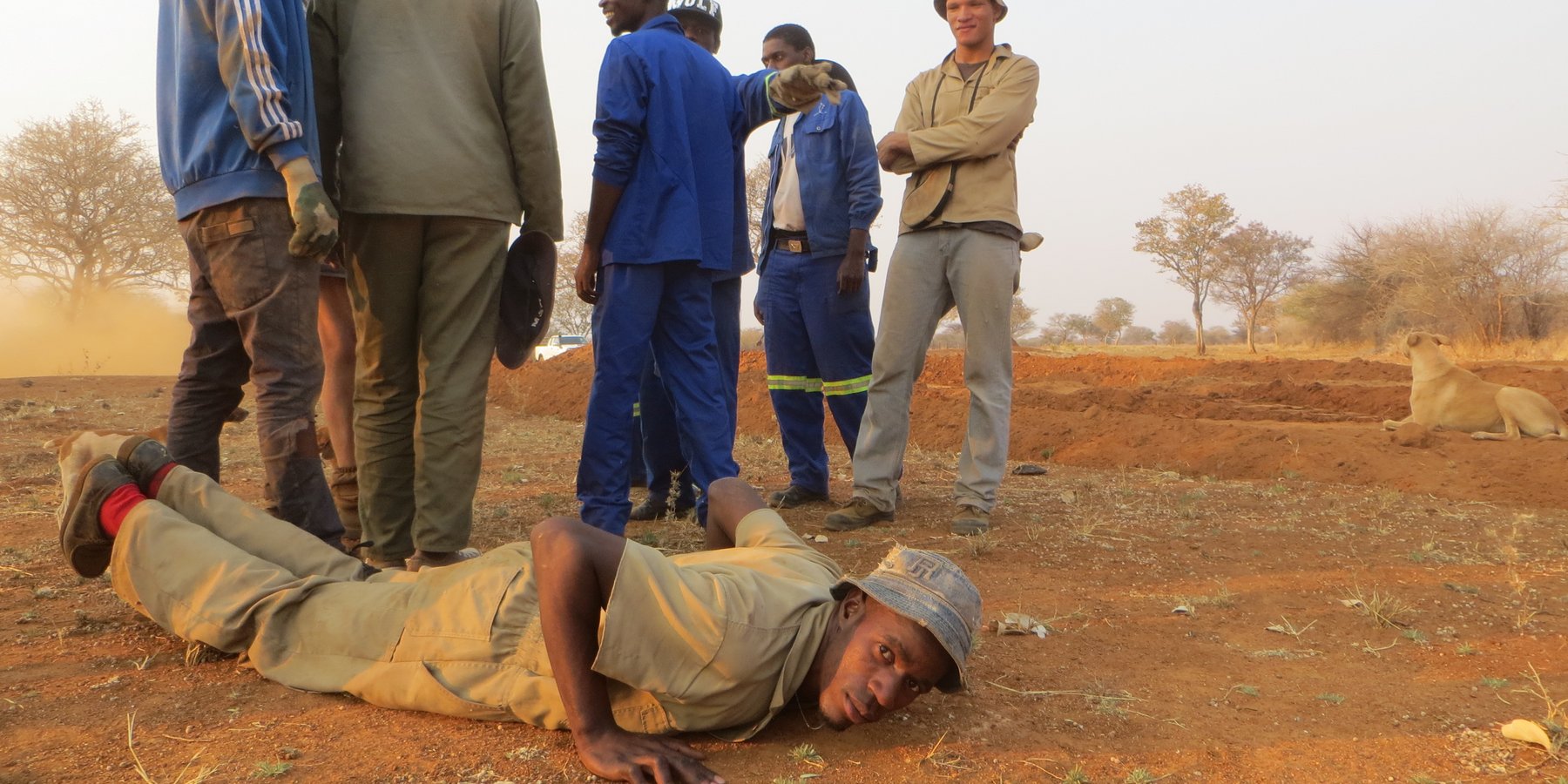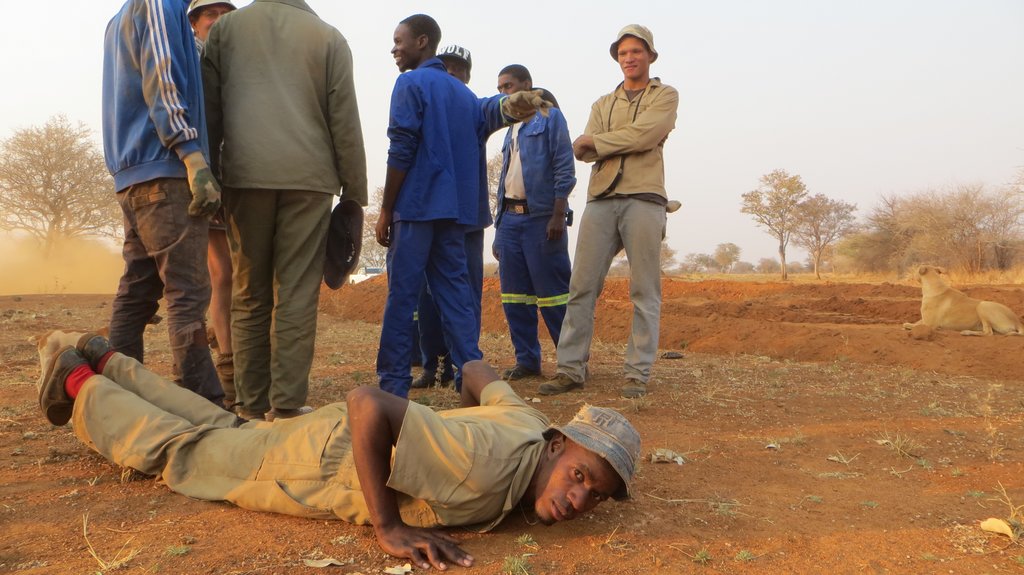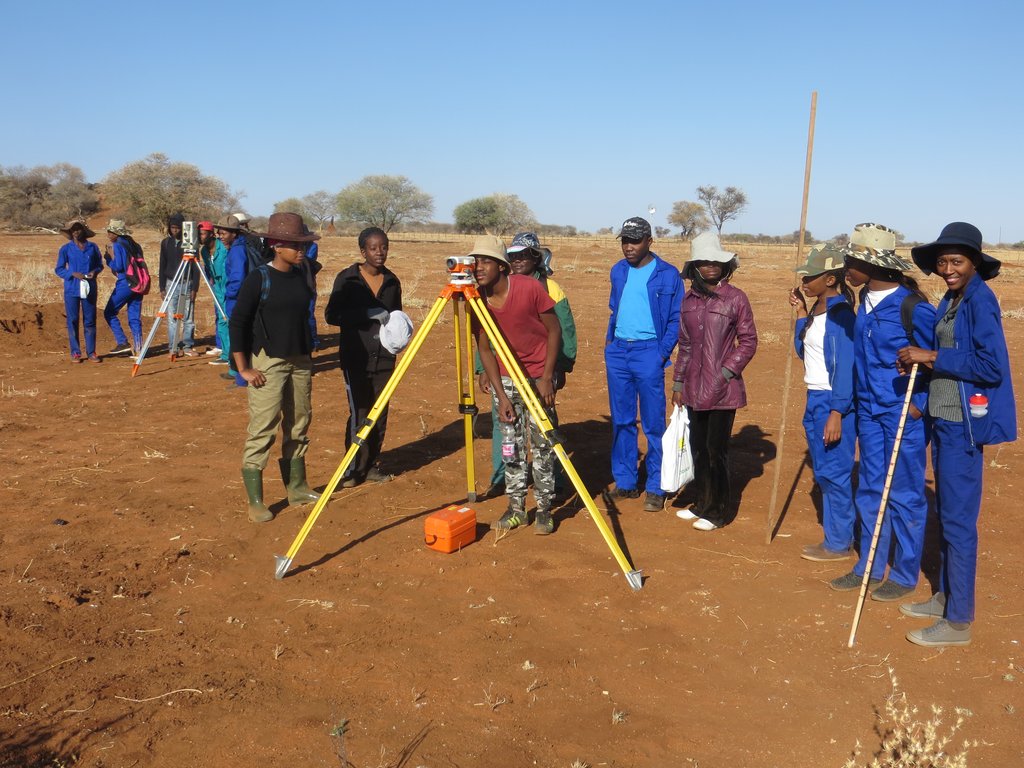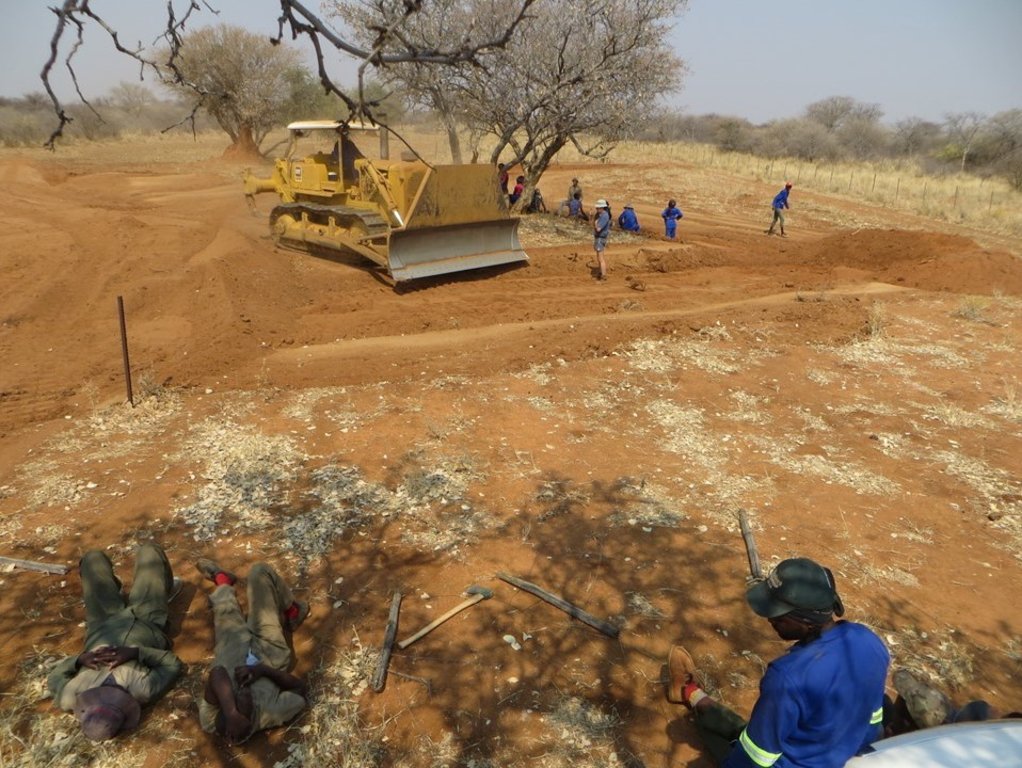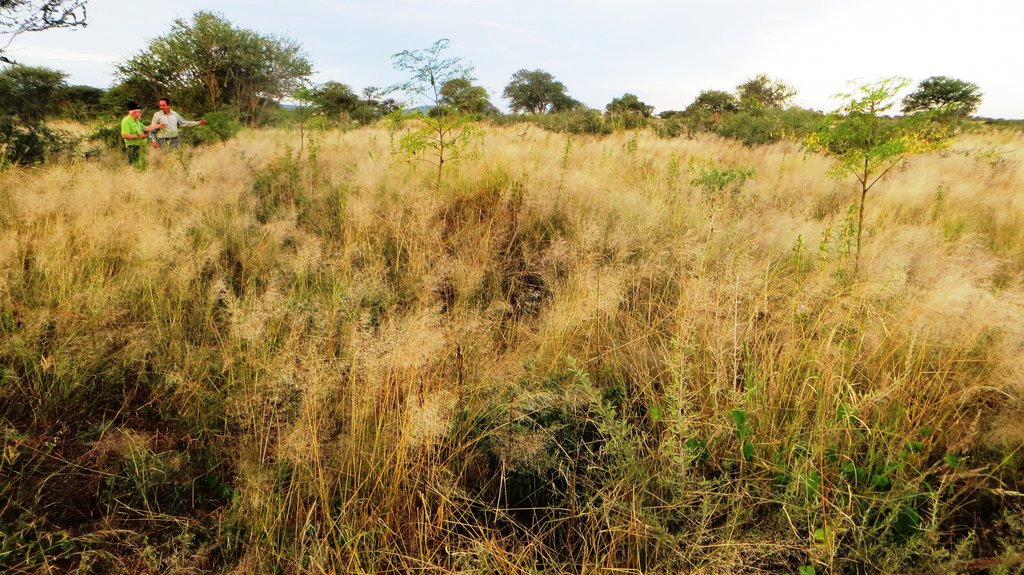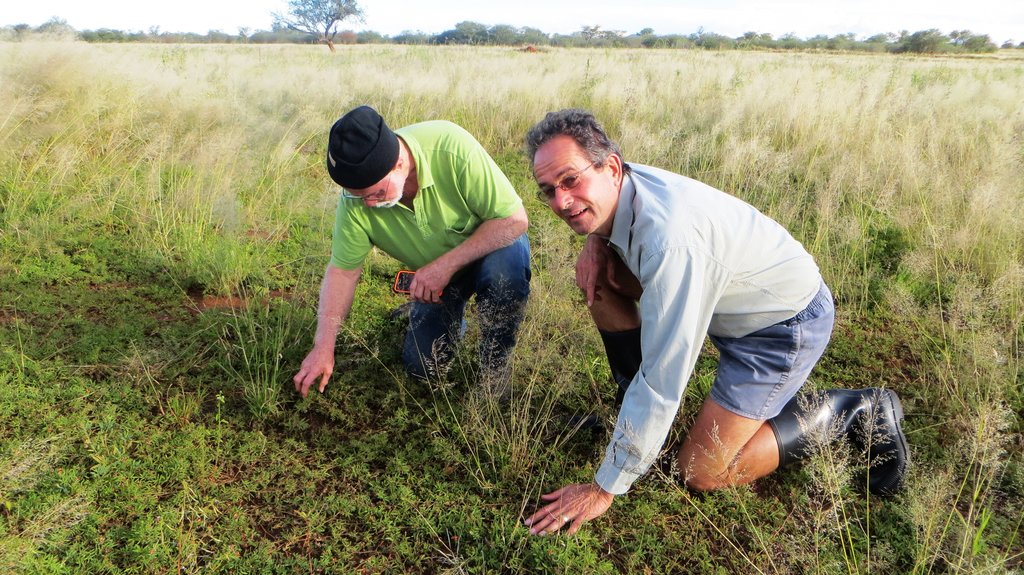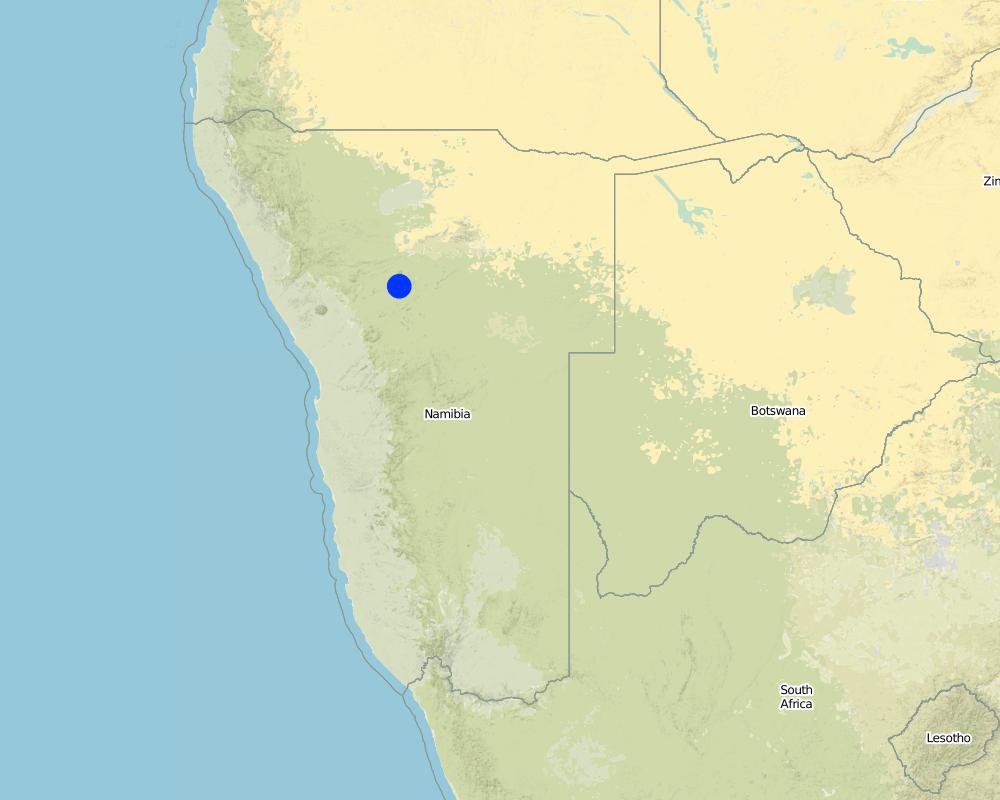Arrangements to convert degraded rangeland into fruitful landscape [Namibia]
- Creación:
- Actualización:
- Compilador: Ibo Zimmermann
- Editor: –
- Revisor: Rima Mekdaschi Studer
Otjikunino
approaches_2847 - Namibia
Visualizar secciones
Expandir todo Colapsar todos1. Información general
1.2 Detalles de contacto de las personas de referencia e instituciones involucradas en la evaluación y la documentación del Enfoque
Usuario de la tierra:
Kahl Uwe
+264 67 290004 / +264811486666
uwe2008@iway.na
Farm Middelplaats
P.O. Box 213 Otjiwarongo
Namibia
Especialista MST:
Pringle Hugh
hpringle1@bigpond.com
Ecosystem Management Understanding
P.O. Box 8522 Alice Springs NT 0871
Australia
Nombre del proyecto que facilitó la documentación/ evaluación del Enfoque (si fuera relevante)
Southern African Science Service Centre for climate change and Adaptive Land management (SASSCAL)Nombre de la(s) institución(es) que facilitaron la documentación/ evaluación del Enfoque si fuera relevante)
Namibia University of Science and Technology ( NUST) - NamibiaNombre de la(s) institución(es) que facilitaron la documentación/ evaluación del Enfoque si fuera relevante)
German Federal Ministry of Education and Research (BMBF) - Alemania1.3 Condiciones referidas al uso de datos documentados mediante WOCAT
¿Cuándo se compilaron los datos (en el campo)?
2017
El compilador y la/s persona(s) de referencia claves aceptan las condiciones acerca del uso de los datos documentados mediante WOCAT :
Sí
1.4 Referencia/s al/los Cuestionario(s) de Tecnologías MST
2. Descripción del Enfoque MST
2.1 Breve descripción del Enfoque
Making arrangements between a commercial farmer and agriculture students to raise the productivity of rangeland by allowing harvested rainwater to infiltrate into the ground to grow multipurpose trees and bushes below contour ditches and grass above ponding banks.
2.2 Descripción detallada del Enfoque MST
Descripción detallada del Enfoque MST:
The approach formed linkages between the Namibia University of Science and Technology (NUST) and a commercial farmer to improve the efficiency of rainwater on rangeland through reducing runoff while increasing infiltration and transpiration. Its objective is to share knowledge and experiences that allow the farmer to grow valuable woody plants, grass and herbs for use by humans and by browsing and grazing animals, which students could then implement elsewhere. Since the approach is applied to parts of the rangeland that experience high runoff, one of the first stages of implementation is to address the root causes of erosion if not already in place. This could be through sound grazing management that provides sufficient rest for grasses to replenish food reserves after grazing that in turn maintains grasses in a nutritious, leafy stage of growth. If infrastructure such as a farm road or dam has concentrated runoff water, then this too needs to be addressed, such as by spreading the runoff over gentle and wide portions of the landscape. Thereafter, an appropriate site is identified based largely on local knowledge of the farmer. A variety of circumstances are taken into account to select the appropriate site, such as position in the landscape that receives widespread runoff rainwater, having sufficiently deep soil for earthmoving and being sufficiently close to where the farmer resides to attend to management at an intensity greater than that required by normal rangeland. Contour lines and gentle gradients are then marked on the ground, whether located by dumpy or laser level as was done by NUST students, or generated by analysis of aerial photographs taken by drone. Earthmoving equipment was then used for digging ditches and raising bunds or ponding banks to harvest rainwater on farm Middelplaats. For smaller areas or where labour is plentiful, the contour ditches can be dug using picks and spades, as was done by students on 2ha of the campus of Katutura Youth Enterprise Centre (KAYEC) in Windhoek. After rain had fallen to sufficiently moisten the soil below contour ditches, valuable plants such as tree seedlings were planted there, This was done by farm workers and students at both Middelplaats and KAYEC, including large canopy trees, shorter thornless trees for “chop and drop” mulching and trees that produce fruits or edible leaves. While the banks will become critical fertile patches in this arid landscape, they will also be broad scale impedances to sheet flow by slowing it down and increasing infiltration rates at a very local scale. Thus degraded “leaky landscapes” turn into “sponge landscapes” and restore deeper and more persistent soil moisture across treated landscapes. The greatest cost, for earthmoving, was borne by the farmer. NUST paid for its students to visit the farm, sometimes supported by the landscape literacy project of SASSCAL funded by BMBF, which also brought in a technical advisor.
2.3 Fotos del Enfoque
2.4 Videos del Enfoque
Comentarios, descripción breve:
Only a short section in the film from 18m07s to 19m15s
https://www.youtube.com/watch?v=6C4V_Cib8ts
Fecha:
08/04/2015
Lugar:
Farm Middelplaats and KAYEC campus, both in Namibia
Nombre del videógrafo:
Andrew Botelle
2.5 País/ región/ lugares donde el Enfoque fue aplicado
País:
Namibia
Región/ Estado/ Provincia:
Otjozondjupa
Especifique más el lugar :
Farm Middelplaats
Comentarios:
The point is at the homestead of Farm Middelplaats
Map
×2.6 Fechas de inicio y conclusión del Enfoque
Indique año del inicio:
2014
Año de conclusión (si el Enfoque ya no se aplica):
1900
2.7 Tipo de Enfoque
- iniciativa local reciente/ innovadora
2.8 Propósitos/ objetivos principales del Enfoque
To make arrangements between a university and a farmer to improve rainwater efficiency in parts of rangeland for growing valuable trees, grass and herbs for use by humans and by browsing and grazing animals
2.9 Condiciones que facilitan o impiden la implementación de la/s Tecnología/s aplicadas bajo el Enfoque
normas y valores sociales/ culturales/ religiosos
- impiden
Viewed with scepticism by some conventional farmers, who do not believe that rainwater harvesting can be cost-effective in rangeland
disponibilidad/ acceso a recursos y servicios financieros
- impiden
May be difficult to convince lenders of repayment potential
entorno institucional
- facilitan
The Namibia University of Science and Technology appreciates the valuable experience that its students can gain through exposure to this approach
colaboración/ coordinación de actores
- facilitan
Trustworthy relationship has developed
marco de trabajo legal (tenencia de tierra, derechos de uso de tierra y agua)
- facilitan
Freehold land is being used
gobernanza de tierras (toma de decisiones, implementación y aplicación)
- facilitan
Under control of willing farmer at Middelplaats
- impiden
Engineers dug a trench at KAYEC to drain water off the land, thus defeating the purpose of rainwater harvesting ditches constructed by students
conocimiento de MST, acceso a apoyo técnico
- facilitan
There is willingness to gain further experience through experimentation
mercados (para comprar insumos, vender productos) y precios
- facilitan
There is demand for the diverse products from fruitful landscapes
carga de trabajo, disponibilidad de mano de obra
- facilitan
Farmer has access to earthmoving equipment with good operators
- impiden
The grader is not big enough for the job. The ideal machine is a CAT 14
3. Participación y roles de las partes interesadas involucradas
3.1 Partes interesadas involucradas en el Enfoque y sus roles
- usuarios locales de tierras/ comunidades locales
Farmer
Implements the activities
- especialistas MST/consejeros agrícolas
Two staff of the Namibia University of Science and Technology (NUST)
Advise on technicalities
- investigadores
Students of the Namibia University of Science and Technology (NUST)
Monitoring effectiveness of the technology
- profesores/ niños en edad escolar/ estudiantes
Classes of students of the Namibia University of Science and Technology (NUST)
Mark out contour lines where the technology is to be implemented
- organización internacional
Southern African Science Service Centre for climate change and Adaptive Land management
Funds an international advisor and students to participate in the project
3.2 Involucramiento de los usuarios locales de tierras/ comunidades locales en las distintas fases del Enfoque
| Involucramiento de los usuarios locales de tierras/ comunidades locales | Especifique quién se involucró y describa las actividades | |
|---|---|---|
| iniciación/ motivación | interactivo | Farmer requested advice from NUST and discussions took place |
| planificación | interactivo | A plan was drawn up through collaboration between farmer and advisers |
| implementación | interactivo | NUST students marked out contour lines Farmer organised construction of infrastructure, planting of trees and their irrigation |
| monitoreo y evaluación | interactivo | Farmer keeps records of activities and students track tree survival and growth |
3.3 Flujograma (si estuviera disponible)
Descripción:
Linkages between farmer and university to convert rangeland into fruitful landscape
Autor:
Ibo Zimmermann
3.4 La toma de decisiones en la selección de Tecnología(s) MST
Especifique quién decidió la selección de las Tecnología/ Tecnologías a implementarse:
- todos los actores relevantes, como parte de un enfoque participativo
Explique:
The farmer of Middelplaats asked for advice from NUST, discussions were held, a plan was jointly drafted, followed by implementation by both farmer and students and advisers of NUST. Informal reviews are held annually where key issues are discussed and the project is “tweaked”.
Especifique las bases que sustentaron la toma de decisiones:
- la evaluación de conocimiento MST bien documentado (la toma de decisiones se basa en evidencia)
- hallazgos de investigaciones
- la experiencia personal y opiniones (no documentadas)
- External experts' visits and suggestions
4. Apoyo técnico, fortalecimiento institucional y gestión del conocimiento
4.1 Construcción de capacidades / capacitación
¿Se proporcionó la capacitación a usuarios de tierras/ otras partes interesadas?
Sí
Especifique quién fue capacitado:
- usuarios de tierras
- personal de campo/ consejeros
- Students
Forma de capacitación:
- en el contexto de trabajo
- cursos
Temas avanzados:
Theory of rangeland science, water cycling and landscape literacy. Practical observational skills and use of dumpy and laser levels.
Comentarios:
The farmer was trained in planning banks with a laser level, as were two staff in marking contour lines. The machine operator was trained in earthworks.
4.2 Servicio de asesoría
¿Los usuarios de tierras tienen acceso a un servicio de asesoría?
Sí
Especifique si servicio proporcionado se realizó:
- en los campos de los usuarios de tierras
Describa/ comentarios:
The farmer could offer an advisory service to other farmers based on experiences gained.
4.3 Fortalecimiento institucional (desarrollo institucional)
¿Se establecieron o fortalecieron instituciones mediante el Enfoque?
- no
4.4 Monitoreo y evaluación
¿El monitoreo y la evaluación forman parte del Enfoque?
Sí
Si respondió que sí, ¿la documentación se utilizará para monitoreo y evaluación?
No
4.5 Investigación
¿La investigación formó parte del Enfoque?
Sí
Especifique los temas:
- economía/ marketing
- ecología
Proporcione detalles adicionales e indique quién hizo la investigación:
Small research projects are done by students of the Namibia University of Science and Technology to fulfil requirements for their course work.
5. Financiamiento y apoyo material externo
5.1 Presupuesto anual para el componente MST del Enfoque
Si no se conoce el presupuesto anual preciso, indique el rango:
- 2,000-10,000
Comentarios (ej. fuentes principales de financiamiento/ donantes principales):
Mostly paid for by farmer, for operation of earthmoving equipment, which will not need to be repeated annually. A small amount for fieldwork by students and advisors paid from SASSCAL research funds.
5.2 Apoyo financiero/material proporcionado a los usuarios de tierras
¿Los usuarios de tierras recibieron financiamiento/ apoyo material para implementar la Tecnología/ Tecnologías? :
No
5.3 Subsidios para insumos específicos (incluyendo mano de obra)
- otro
| Otro (especifique) | En qué grado | Especifique los subsidios |
|---|---|---|
| Marking of contour lines | Done as part of student training |
Si la mano de obra de usuarios de tierras fue un insumo sustancial, ¿fue:
- pagado en efectivo?
Comentarios:
Fully paid by farmer at Middelplaats, but provided at KAYEC by students as part of their training.
5.4 Crédito
¿Se proporcionó crédito bajo el Enfoque para actividades MST?
No
5.5 Otros incentivos o instrumentos
¿Se usaron otros incentivos o instrumentos para promover la implementación de Tecnologías MST?
Sí
Si fuera el caso, especifique :
Advice was provided on implementation, and contour lines were marked out by students
6. Análisis de impacto y comentarios de conclusión
6.1 Impactos del Enfoque
¿El Enfoque empoderó a los usuarios locales de tierras, mejoró el involucramiento de las partes interesadas?
- No
- Sí, un poco
- Sí, moderadamente
- Sí, mucho
Only one farmer and his workers have been deeply involved. Others have been briefly exposed to the project.
¿El Enfoque facilitó la toma de decisiones basada en evidencia?
- No
- Sí, un poco
- Sí, moderadamente
- Sí, mucho
Records of tree survival determined the need for initial irrigation.
¿El Enfoque ayudó a los usuarios de tierras a implementar y mantener Tecnologías MST?
- No
- Sí, un poco
- Sí, moderadamente
- Sí, mucho
By advising the farmer at different stages of implementation.
¿El Enfoque mejoró la coordinación e implementación efectiva en costos de MST?
- No
- Sí, un poco
- Sí, moderadamente
- Sí, mucho
At a key meeting we agreed that grazing pressure from horses and wildlife was holding back the project.
¿El Enfoque mejoró el conocimiento y capacidades de los usuarios para implementar MST?
- No
- Sí, un poco
- Sí, moderadamente
- Sí, mucho
Experience gained by farmer and workers, and exposure to some other farmers.
¿El Enfoque mejoró el conocimiento y capacidades de otras partes interesadas?
- No
- Sí, un poco
- Sí, moderadamente
- Sí, mucho
NUST students gained experience and understanding.
¿El Enfoque mejoró la equidad de género y empoderó a las mujeres y niñas?
- No
- Sí, un poco
- Sí, moderadamente
- Sí, mucho
Students who participated included many females.
¿El Enfoque alentó a jóvenes/ la siguiente generación de usuarios de tierras a involucrarse con MST?
- No
- Sí, un poco
- Sí, moderadamente
- Sí, mucho
Students gained enough experience during fieldwork to apply what they learned to other areas.
¿El Enfoque resultó en mejor seguridad alimentaria/ mejoró la nutrición?
- No
- Sí, un poco
- Sí, moderadamente
- Sí, mucho
Growth of food trees, such as Moringa oleifera, and improved forage.
¿El Enfoque llevó a un acceso mejorado a tierra y saneamiento?
- No
- Sí, un poco
- Sí, moderadamente
- Sí, mucho
Improved infiltration replenishes groundwater, which is used by both humans and animals for drinking, and lush forage reduces drinking by livestock.
¿El Enfoque mejoró la capacidad de los usuarios de tierras a adaptarse a los cambios climáticos/ extemos y mitigar desastres relacionados al clima?
- No
- Sí, un poco
- Sí, moderadamente
- Sí, mucho
Improved rainwater-use efficiency on small part of farm.
¿El Enfoque llevó a oportunidades de empleo, ingresos?
- No
- Sí, un poco
- Sí, moderadamente
- Sí, mucho
Saleable products such as Moringa leaves.
6.2 Motivación principal del usuario de la tierra para implementar MST
- producción incrementada
Grass and trees grow better where rainwater infiltrated
- incremento de la renta(bilidad), proporción mejorada de costo-beneficio
More of better quality forage
- reducción de la degradación de la tierra
Better plant cover and soil biology
- reducción del riesgo de desastres naturales
Improved buffering against drought
- conciencia medioambiental
By students and farm workers are exposed to the approach
- conocimiento y capacidades mejorados de MST
By students and farm workers are exposed to the approach
- mejoramiento estético
Less bare ground and a more diverse landscape with reduction in extremes of temperature
6.3 Sostenibilidad de las actividades del Enfoque
¿Pueden los usuarios de tierras sostener lo que se implementó mediante el Enfoque (sin apoyo externo)?
- sí
Si respondió que sí, describa cómo:
The farmer will continue to finance the maintenance work, the costs of which are expected to be covered by the increase in production.
6.4 Fortalezas/ ventajas del Enfoque
| Fuerzas/ ventajas/ oportunidades desde la perspectiva del usuario de la tierra |
|---|
| Advice from the university is appreciated |
| Marking out of contour lines by students is appreciated |
| Fuerzas/ ventajas/ oportunidades desde la perspectiva del compilador o de otra persona de referencia clave |
|---|
| Students gain useful experience on the farm |
6.5 Debilidades/ desventajas del Enfoque y formas de sobreponerse a ellos
| Debilidades/ desventajas/ riesgos desde la perspectiva del usuario de la tierra | ¿Cómo sobreponerse a ellas? |
|---|---|
| Students are not always available at the best times of the year. | By training farm workers to mark out contour lines |
| Debilidades/ desventajas/ riesgos desde la perspectiva del compilador o de otra persona de referencia clave | ¿Cómo sobreponerse a ellas? |
|---|---|
| Students might make mistakes, as they are still learning | Prepare students well and check their work |
7. Referencias y vínculos
7.1 Métodos/ fuentes de información
- visitas de campo, encuestas de campo
As part of ongoing cooperation
- Participation in fieldwork and e-mail communication with land user and specialist
Participation in fieldwork and e-mail communication with land user and specialist
7.2 Referencias a publicaciones disponibles
Título, autor, año, ISBN:
Back from the brink, Andrews, 2006, 0-7333-1962-9
¿Dónde se halla disponible? ¿Costo?
https://www.amazon.com/Back-Brink-Australias-Landscape-Saved/dp/0733319629 $37
Título, autor, año, ISBN:
Beyond the brink, Andrews, 2008, 978-0733324109
¿Dónde se halla disponible? ¿Costo?
https://www.amazon.com/Beyond-Brink-Sustainable-Australian-Landscape/dp/073332410X $59
Título, autor, año, ISBN:
Rainwater harvesting for drylands and beyond: Vol 1 – Guiding principles to welcome rainfall into your life and landscape, Lancaster, 2009, 978-0-9772464-0-3
¿Dónde se halla disponible? ¿Costo?
https://www.amazon.com/Rainwater-Harvesting-Drylands-Beyond-2nd/dp/0977246434 $20
7.3 Vínculos a la información relevante disponible en línea
Título/ descripción:
Principles of natual sequence farming
URL:
http://www.nsfarming.com/principles.html
Título/ descripción:
Rangeland Rehydration
URL:
www.emulandrecovery.org.au
Vínculos y módulos
Expandir todo Colapsar todosVínculos
No hay vínculos
Módulos
No se hallaron módulos


